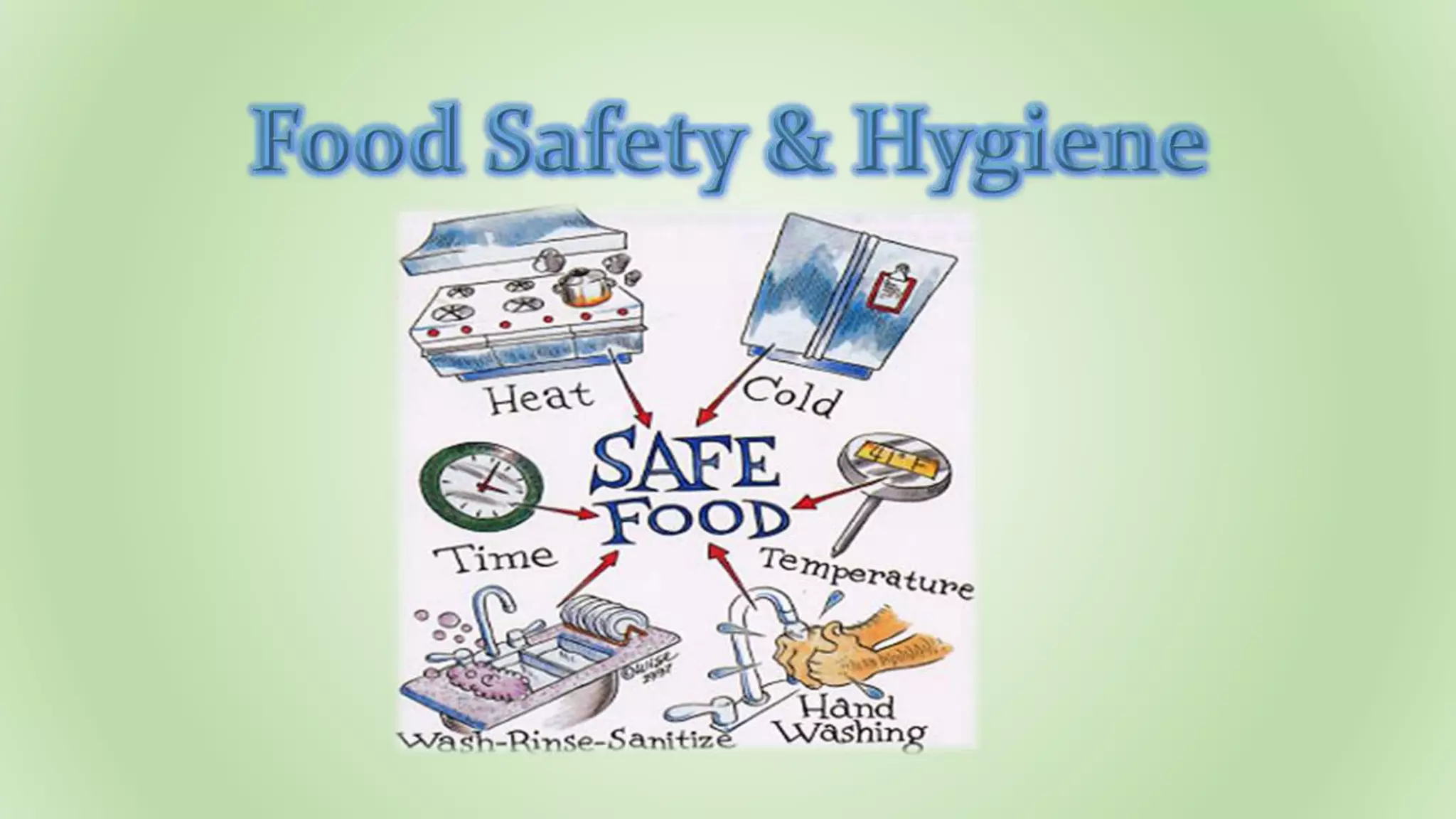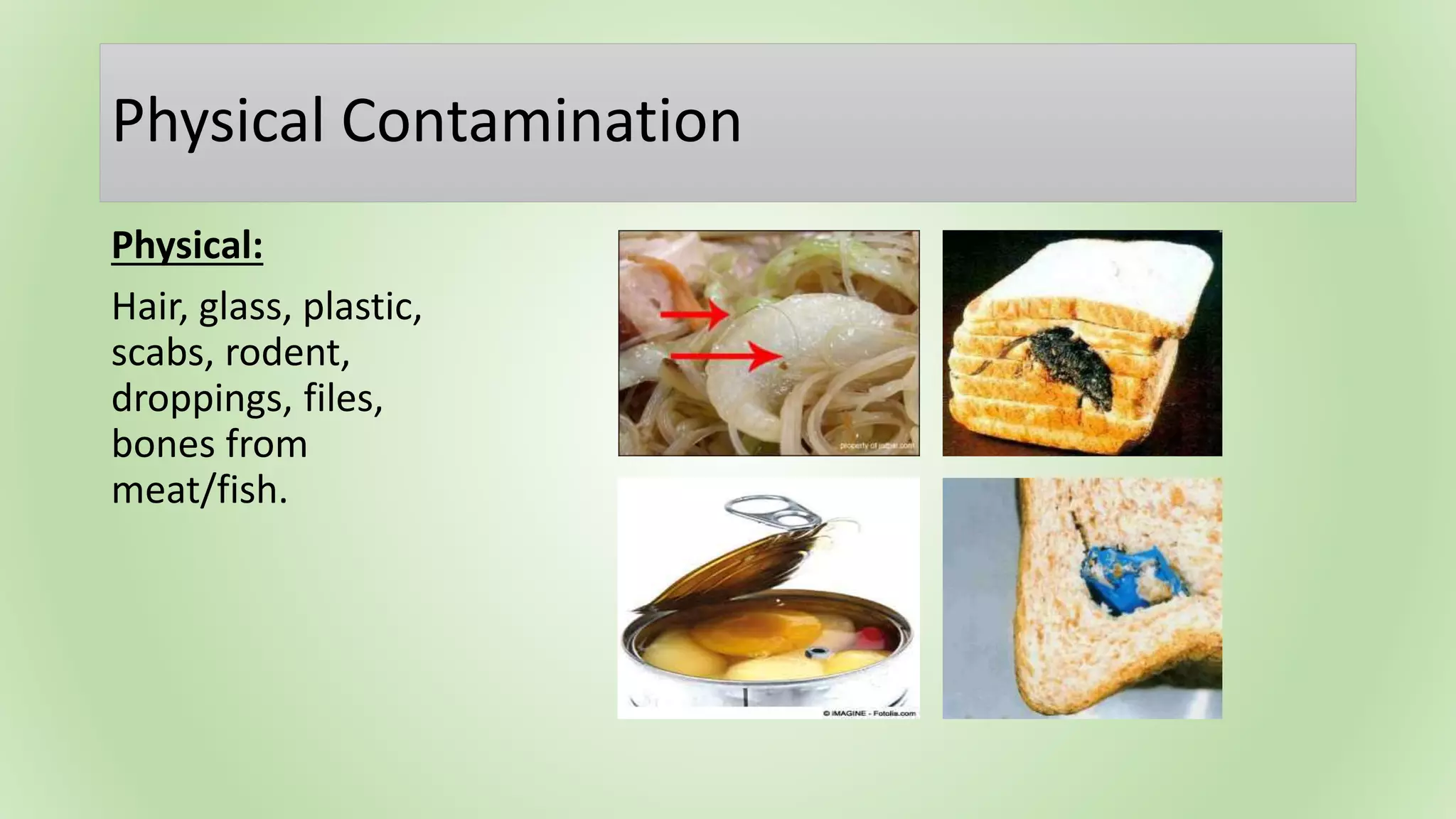This document discusses food safety and contamination prevention. It introduces food safety and types of contamination including physical, chemical, and biological. Common causes of contamination are cross-contamination, poor personal hygiene, improper cleaning and time/temperature abuse. Key prevention strategies include proper personal hygiene, separating raw and cooked foods to prevent cross-contamination, thoroughly cooking foods, chilling and reheating foods properly, cleaning and sanitizing surfaces and equipment, pest control, and proper food receiving, storage, and rotation.



























